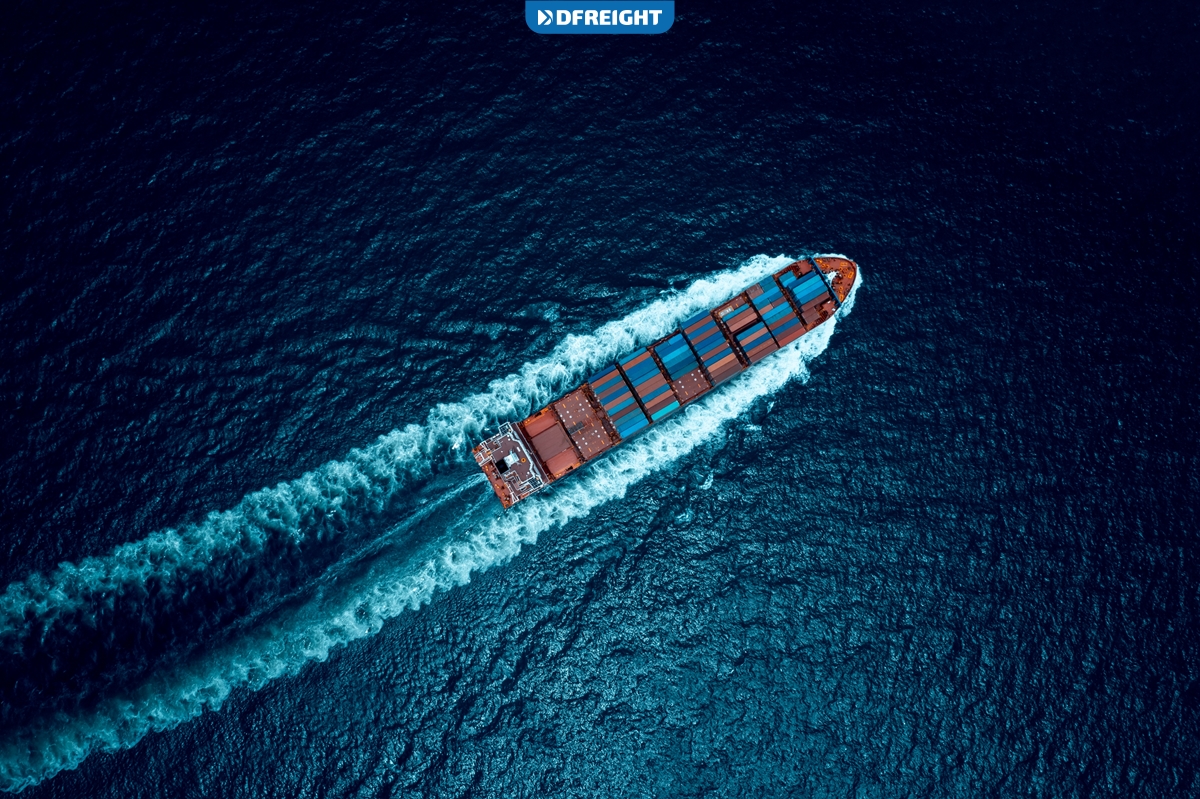The process of freight forwarding is a complex one, involving multiple steps and stakeholders. It requires expertise in logistics and supply chain management to ensure that goods are transported safely and efficiently from point A to point B. Freight forwarding is an integral part of any international trade transaction, and understanding the steps involved can help businesses ensure their shipments are handled properly and arrive on time. In this blog post, we will explore the process of freight forwarding in detail.
Ready to simplify the process of freight forwarding? Let DFreight be your digital freight forwarder. Our cutting-edge technology and experienced logistics experts make it easier to manage your shipments, while our reliable network ensures your goods arrive on time and in compliance with international regulations. Get started today with DFreight!
Table of Contents
What Is Freight Forwarding?
The process of freight forwarding includes arranging the transportation of goods from one location to another. It includes arranging the pick-up, transport, and delivery of goods, as well as obtaining necessary paperwork and customs clearance to ensure the shipment is legally compliant. A forwarding agent is an expert in logistics and supply chain management and can help businesses move goods quickly and cost-effectively. Freight forwarders can also provide additional services such as warehousing, shipment tracking, and insurance to protect the goods during transit.
The Process of Freight Forwarding
The process of freight forwarding involves multiple steps and various stakeholders. It starts with the establishment of a contract between the freight forwarder and the customer to define the scope of the services to be provided. The next step is document preparation, where the freight forwarder completes the paperwork required to move the goods. Then the goods are picked up, transported, and cleared for customs. Finally, the goods are delivered to the destination. Throughout the process, the freight forwarder works closely with the customer to ensure the shipment is handled properly and arrives on time.
Establishing a Contract
The first step for a freight forwarding company is establishing a contract between the freight forwarder and the customer. The contract should specify the scope of services to be provided, including the type of shipment, pick-up and delivery locations, transit times, and any additional services such as warehousing or tracking. The contract should also include the cost of the services, payment terms, and any applicable fees and surcharges. Establishing a contract ensures both parties understand their responsibilities and expectations for the shipment.
Document Preparation
The second step of the freight forwarding process is document preparation. The freight forwarder will complete the paperwork required to move the goods, including customs documents, insurance certificates, and other documents, as necessary. The freight forwarder will also provide the customer with the documentation to ensure the shipment is legally compliant. This step is critical in ensuring the shipment is processed efficiently and without any delays.
Picking Up the Goods
The third step of the freight forwarding process is picking up the goods. This is typically done by a third-party carrier, such as a trucking company, who will transport the goods to the freight forwarder. The freight forwarder will work with the carrier to ensure the shipment is properly loaded and secure for transit. They will also provide the necessary paperwork, such as the bill of lading and other documents, to the carrier to ensure the shipment is legally compliant.
Transporting the Goods
The fourth step of the freight forwarding process is transporting the goods. Depending on the type of shipment and the origin and destination, goods can be transported by air, sea, rail, or road. The freight forwarder will choose the most cost-effective and efficient option for the customer and will coordinate with the carrier to ensure the shipment is delivered on time and in compliance with international regulations.
Clearance and Delivery
The fifth step of the freight forwarding process is clearance and delivery. This step involves obtaining the necessary customs clearance and paperwork to ensure the goods can be legally transported. The freight forwarder will also coordinate with the carrier to arrange the delivery of the goods to the destination. This step is critical in ensuring the goods are delivered on time and without any delays or additional costs.
Conclusion
To conclude, the process of freight forwarding is a complex one, requiring expertise in logistics and supply chain management. It involves multiple steps, stakeholders, and paperwork to ensure goods are transported safely and efficiently from point A to point B. Understanding the steps of freight forwarding can help businesses ensure their shipments are handled properly and arrive on time.
What is freight forwarding?
Freight forwarding is the process of arranging for the transportation of goods from one place to another. Freight forwarders are responsible for arranging the best and most cost-effective method of transportation for goods, taking into consideration factors such as time, cost, and safety.
What services do freight forwarders provide?
Freight forwarders provide a wide range of services, including arranging for the shipment of goods, negotiating freight rates with carriers, preparing and processing shipping documents, and providing necessary insurance coverage.
What are the benefits of using a freight forwarder?
Using a freight forwarder can provide numerous benefits, including cost savings, improved transit times, and access to a wide range of services. Additionally, freight forwarders are often able to provide valuable insight into international regulations and customs procedures that can help to streamline the process.
What documents are required for freight forwarding?
The documents typically required for freight forwarding will vary depending on the specific shipment, but typically include documents such as the bill of lading, commercial invoice, and packing list.














